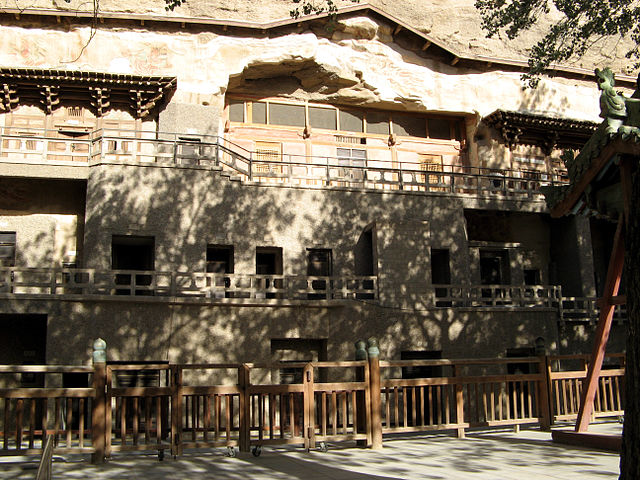
Facade
Mogao Caves, Dunhuang
(near the modern entrance)
The celebrated Mogao grottoes were carved out of the base of the eastern slope of Mingsha mountain, near the old Silk Road oasis town of Dunhuang in the far western end of Gansu (map), between the 4th and 14th centuries AD. They are arranged in five vertical tiers, running over a horizontal length of 1600m (1 mile) from north to south. The site today contains 492 Buddhist cave-chapels, many of which are painted floor-to-ceiling and decorated with painted clay sculptures. The caves were used for devotions and meditation, and the larger ones were occupied by resident monks. The legend of their origin is that, in 366 AD, a monk named Le Zun looked across the river at dawn and saw a thousand Buddhas appear on the golden cliff face, illuminated by the rising sun. His vision inspired pious merchants and officials to begin excavating the caves, in the hope of a prosperous journey along the Silk Road and in gratitude for a safe return.

